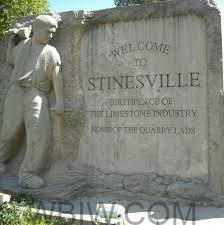
MONROE CO. – In February and March 2023, Indiana added eight listings to the National Register of Historic Places.
These listings include houses, a residential and commercial district, churches, an industrial building, a library, and a site related to the Underground Railroad.
Included on the list was the Stinesville Historic District in Monroe County.
These listings add 79 historic resources to the National and State Registers.
The Stinesville Historic District, 1855-1969, generally comprises the historic village boundaries of the town. Simple vernacular houses dot the hilly terrain. The quarry industry, which gave rise to the town, has a notable presence in the village through the many structures and buildings composed of limestone.
Small-to-large sections of retaining walls, lawn or curb edging, pavers for walks, and other uses of the readily available stone brought home by men who worked at the quarries are evident throughout the district.

Building materials, most notably foundations and basements of 19th-century buildings have the same random-course appearance as many of the structures and feature hand-cut or split limestone. Because so many buildings have exposed basements due to the terrain, this feature is also significant to the character of the district.

Also interesting are a number of spring houses, sometimes attached to the primary residence, that dot the village. The use of more finished limestone is also present in the district, adding to the general character. This is most evident by its use on six buildings in the historic commercial area.

The district also includes Bean Blossom Township School and the Stinesville Church of the Nazarene, which was built in 1963.
There are a handful of good examples of architectural styles from the late 19th and early 20th century located in the district, however, more prevalent are simple vernacular or carpenter-builder examples of houses, in double pen, gabled-ell, and one-story foursquare configurations. A few of these have carpenter-applied features related to popular styles but generally are simple in their interpretation.
For information on Indiana properties listed in the National Register of Historic Places and the Indiana Register of Historic Sites and Structures, see on.IN.gov/shaard.



